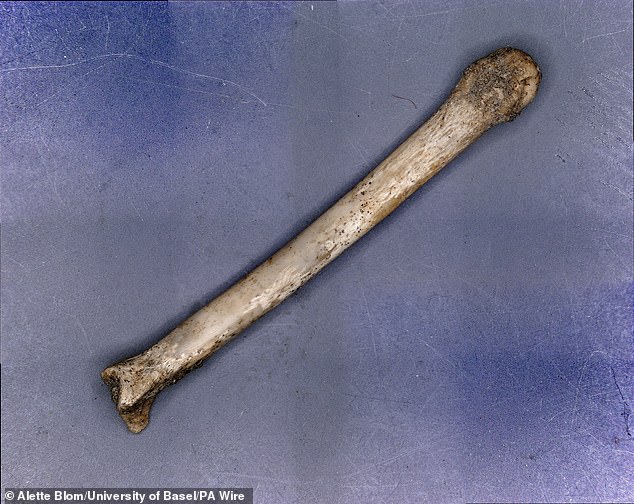Leprosy spread among humans and red squirrels in medieval England, research reveals
- Leprosy is one of the oldest recorded diseases in human history
- Researchers have found evidence that squirrels served as a heat source for species in England
They may be cute and charismatic, but red squirrels may have spread leprosy to people in medieval England, according to a new study.
Researchers have found evidence suggesting that our native rodents once served as an important host for the Mycobacterium leprae strains that cause leprosy in humans.
The disease is one of the oldest in human history and affects the skin, nerves, eyes and lining of the nose.
If left untreated, it can cause permanent disability; the nerve damage can lead to paralysis of the hands and feet, paralysis and blindness.
Experts studied 25 human and 12 squirrel samples excavated from two archaeological sites in Winchester.
They may be cute and charismatic, but red squirrels may have spread leprosy to people in medieval England, according to a new study (stock image)

Researchers have found evidence suggesting that our native rodents once served as an important host for the Mycobacterium leprae strains that cause leprosy in humans. Pictured: A squirrel bone found in Winchester
The city was known for its leprosarium – a hospital for people with leprosy – and its ties to the fur trade.
In the Middle Ages, squirrel fur was widely used to decorate and line garments. Many people at the time also kept squirrels as pets.
The team, from the University of Basel and the University of Leicester, analyzed medieval forms of leprosy, including one from a red squirrel.
They discovered that they all belonged to one branch of the Mycobacterium leprae family tree.
The findings suggest that the infection circulated between humans and animals in the Middle Ages in a way that has not been previously detected.
Modern red squirrels also appear to carry strains of the leprosy bacteria, but the team said these rodents pose no threat to people in Britain.

A lady plays with a pet squirrel while wearing a collar with bells, in the early 14th century Luttrell Psalter
Senior author of the study, Professor Verena Schuenemann, said: ‘Our genetic analysis allowed us to identify red squirrels as the first ancient animal hosts of leprosy.
‘The medieval red squirrel species we recovered is more closely related to medieval human strains from the same city than to strains isolated from infected modern red squirrels.
‘Overall, our results indicate an independent circulation of M. leprae strains between humans and red squirrels during the medieval period.’
Despite popular myths that leprosy can spread from person to person through physical contact, the infection is not highly contagious.
It is believed that spread occurs mainly through coughing or sneezing.
Dr. Sarah Inskip, a bioarchaeologist at the University of Leicester, said: ‘Very few people are susceptible to leprosy these days and you would have to have prolonged contact with an infected animal.
‘There aren’t many left today either – Britain has only 160,000 native red squirrels – so the chances are extremely slim.’
The findings have been published in the journal Current Biology.
